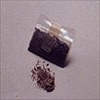Methamphetamine

What are the street names/slang
terms for it?
Chalk, Crank, Croak, Crypto, Crystal, Fire, Glass, Meth,
Speed, White cross.
What is it?
Methamphetamine
is an addictive stimulant drug that strongly activates
certain systems in the brain.
What does it
look like?
Meth is a
crystal-like powdered substance that sometimes comes in
large rock-like chunks. When the powder flakes off the rock,
the shards look like glass, which is another nickname for
meth. Meth is usually white or slightly yellow, depending on
the purity.
How is it used?
Methamphetamine
can be taken orally, injected, snorted, or smoked.
Methamphetamine
is an addictive stimulant drug that strongly activates
certain systems in the brain. Methamphetamine is closely
related chemically to amphetamine, but the central nervous
system effects of methamphetamine are greater. Both drugs
have some medical uses, primarily in the treatment of
obesity, but their therapeutic use is limited.
Methamphetamine
is made in illegal laboratories and has a high potential for
abuse and dependence. Street methamphetamine is referred to
by many names, such as "speed," "meth,"
and "chalk." Methamphetamine hydrochloride, clear
chunky crystals resembling ice, which can be inhaled by
smoking, is referred to as "ice,"
"crystal," and "glass."
Health
Hazards
Methamphetamine
releases high levels of the neurotransmitter dopamine, which
stimulates brain cells, enhancing mood and body movement. It
also appears to have a neurotoxic effect, damaging brain
cells that contain dopamine and serotonin, another
neurotransmitter. Over time, methamphetamine appears to
cause reduced levels of dopamine, which can result in
symptoms like those of Parkinson's disease, a severe
movement disorder.
Methamphetamine
is taken orally or intranasally (snorting the powder), by
intravenous injection, and by smoking. Immediately after
smoking or intravenous injection, the methamphetamine user
experiences an intense sensation, called a "rush"
or "flash," that lasts only a few minutes and is
described as extremely pleasurable. Oral or intranasal use
produces euphoria - a high, but not a rush. Users may become
addicted quickly, and use it with increasing frequency and
in increasing doses.
Animal research
going back more than 20 years shows that high doses of
methamphetamine damage neuron cell-endings. Dopamine- and
serotonin-containing neurons do not die after
methamphetamine use, but their nerve endings
("terminals") are cut back and re-growth appears
to be limited.
The central
nervous system (CNS) actions that result from taking even
small amounts of methamphetamine include increased
wakefulness, increased physical activity, decreased
appetite, increased respiration, hyperthermia, and euphoria.
Other CNS effects include irritability, insomnia, confusion,
tremors, convulsions, anxiety, paranoia, and aggressiveness.
Hyperthermia and convulsions can result in death.
Methamphetamine
causes increased heart rate and blood pressure and can cause
irreversible damage to blood vessels in the brain, producing
strokes. Other effects of methamphetamine include
respiratory problems, irregular heartbeat, and extreme
anorexia. Its use can result in cardiovascular collapse and
death.
A study in
Seattle confirmed that methamphet amine use was widespread
among the city's homosexual and bisexual populations. Of
these groups, members using methamphetamine reported they
practice sexual and needle-use behaviors that place them at
risk of contracting and transmitting HIV and AIDS.
What is its
federal classification?
Methamphetamine
is a Schedule II drug.
Source: NIDA,
DEA
|